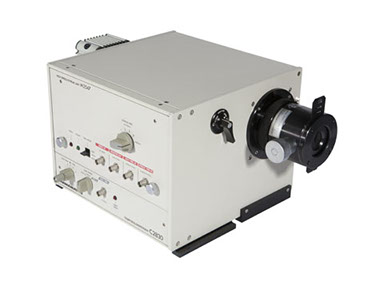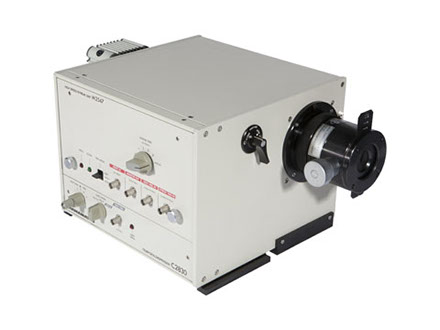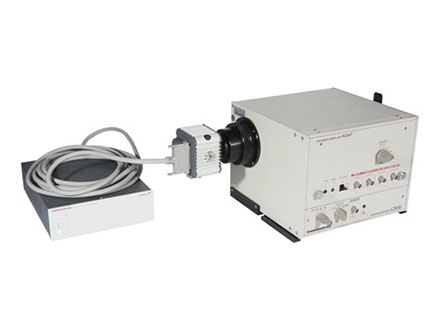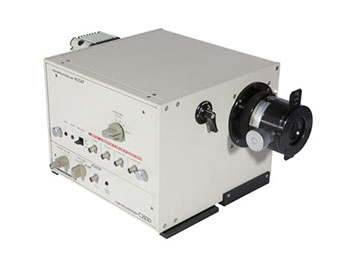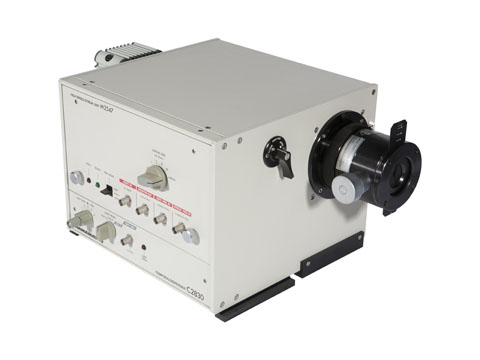
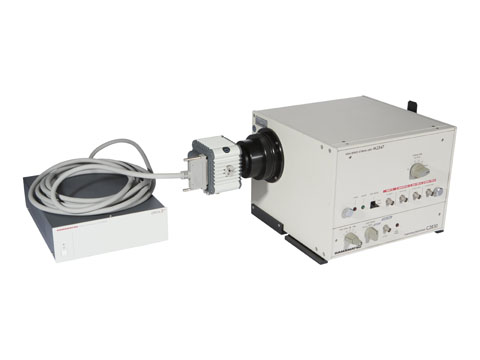
Hamamatsu C2830 UV-VIS Streak Camera
Includes
- C2830 Streak Camera
- M2547 Fast Sweep Unit
- A1976 Broadband Input Optics for 200 to 1000 nm
- Output optics assembly
- Power supply
- ORCA-R2 Cooled CCD Camera Head
- ORCA-R2 Camera Controller
- ORCA-R2 Camera Head to Controller Cable
- Hamamatsu DCAM image acquisition software
- User Manuals
Condition
System is good for applications involving relatively bright sources where large dynamic range isn't required. The streak tube in this system is usable, but exhibits significant wear to both the photocathode and MCP meaning that overall sensitivity is significantly less than that of a new camera and that response is not uniform. We will provide test data that may be used to partially compensate for the non-uniform response during data processing.
refurbished by Hofstra Group
- Quantifed streak tube condition
- Verified electronics
- Replaced degraded electronic components
- Replaced output optics
Options available from Hofstra Group
- Standard lead time is 8 weeks; expedite available
- Spectrometer input for time-resolved spectroscopy
- Extended spectral range input optics
- Modification of electronics and optics for special applications
- Development of custom modules
- Custom optics
- Calibration of timebase
- Service and training
CONTACT
JOIN US
ABOUT US
PRICE: $19200.00
Applications
- Picosecond spectroscopy
- Plasma diagnostics
- Beam diagnostics
- Optical communication
- Time-resolved spectroscopy
- Laser fusion
- Laser photochemistry
- Photobiology
- Photophysics
- Free electron lasers
- Plasma light emission
- Laser ablation
- Combustion
- Detonics
- Fluorescence lifetime measurement
- Transient absorption measurement
- Time-resolved Raman spectroscopy
- Lidar
- Thomson scattering
Features
- Built-in microchannel plate image intensifier
- Shutter mode capable of 100ns framing with up to 10 kHz repetition rate
- Interchangeable plugins for custom settings
- Fine temporal resolution
- Observations using dual time axes
- High-speed gate function (0.1 μs to continuous)
- Real-time read-out system
- Low jitter
- Superior dynamic range
- High SNR
Streak cameras are high-speed light detectors which enable direct measurement of light phenomena with unsurpassed temporal resolution. They can simultaneously measure time, position (or wavelength) and light intensity, and process the data in real-time using a dedicated read-out system.
Operating Principle
The streak camera converts incident light into electrons and performs a high-speed sweep (deflecting electrons from top to bottom), enabling detection of the time variation of the incident light intensity by converting these into different positions on the screen.

The light pulse to be measured is focused onto the photocathode of the streak tube through the slit, where the photons are converted into a number of electrons proportional to the intensity of the incident light. These electrons are accelerated and conducted towards the phosphor screen, and a high-speed voltage which is synchronized to the incident light is applied. The electrons are swept at high speed from top to bottom and are then multiplied in the MCP (micro-channel plate), after which they are bombarded against the phosphor screen of the streak tube and converted to an optical image.
The optical image which appears on the phosphor screen is called a streak image, and shows the intensity distribution of the incident light, by which the positions of the electrons can be determined in the perpendicular direction over the passage of time. Using this method, the temporal intensity distribution of the light being measured can be displayed as the spatial intensity distribution on the phosphor screen.
Specifications
Spectral Response Range |
200 to 850 nm |
|---|---|
Input Slit Configuration |
Slit Length (max.): 0 to 20 mm |
Operating System Requirements |
Windows 10/8/7 or macOS |
Usable Photocathode Width |
8.0 mm |
Temporal Resolution |
10 picoseconds |
Shipping Weight |
157 lbs |
Retail Price |
$145,590.00 |
Hofstra Group Price |
$19,200 |
